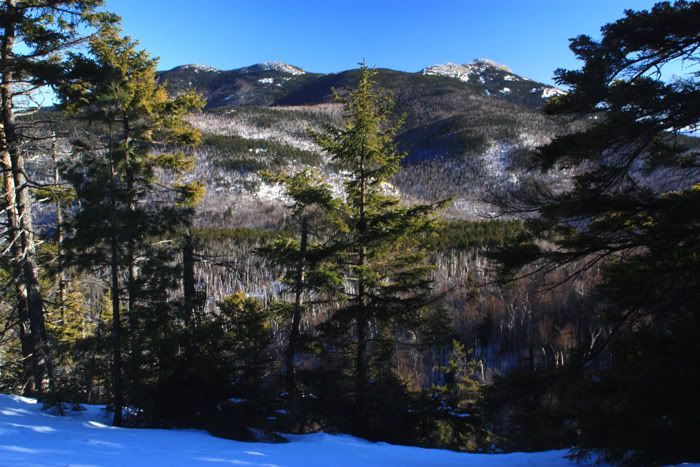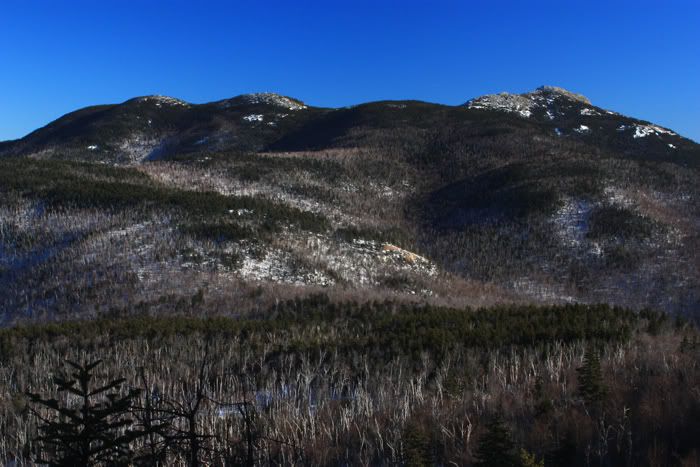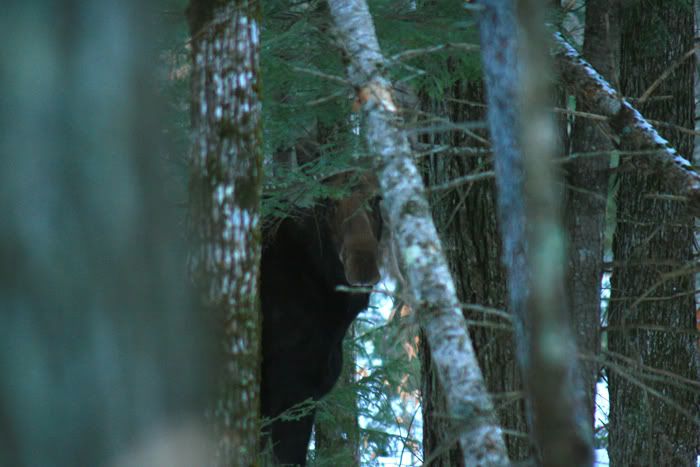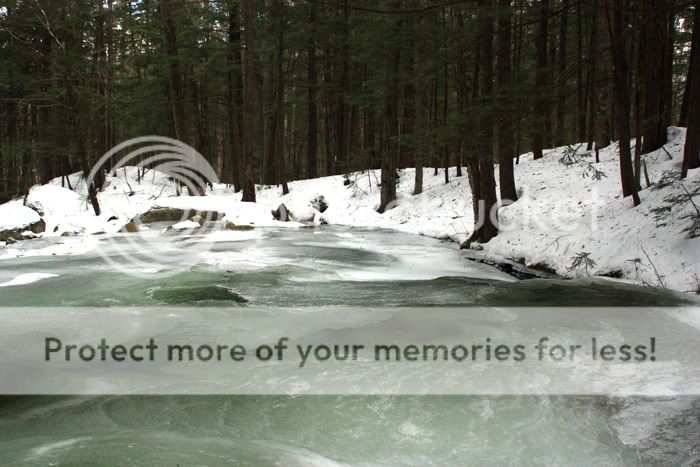forestgnome
New member
The off-trail conditions are fantastic! The crust is hard enough for complete support, and there's a few inches of powder on top. Sweeeeet!
I took the Bolles Trail up to the height-of-land. There is a ledge on the western wall of the notch, only seen in winter, that I've wanted to explore. There's a new survey marker for the new wilderness boundary in the notch. From there, I made my way up to the ledge. There's a smaller, flat ledge that juts out, about the size of a kitchen table with a beautiful view of Mt. Chocorua and The Sisters.
The trail is directly below this ledge.
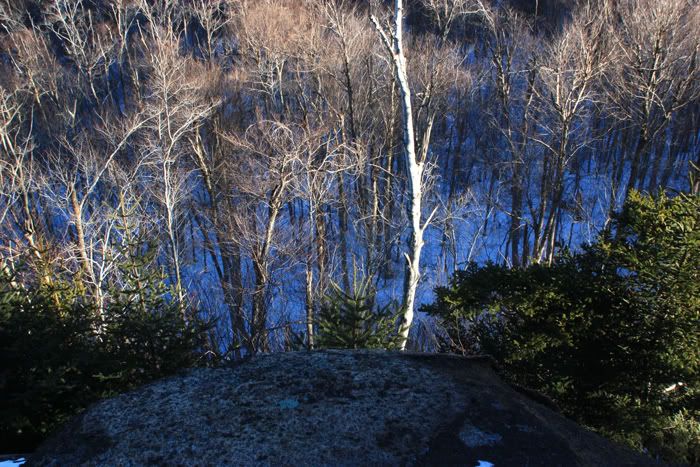
view to Mt. Chocorua and The Sisters...
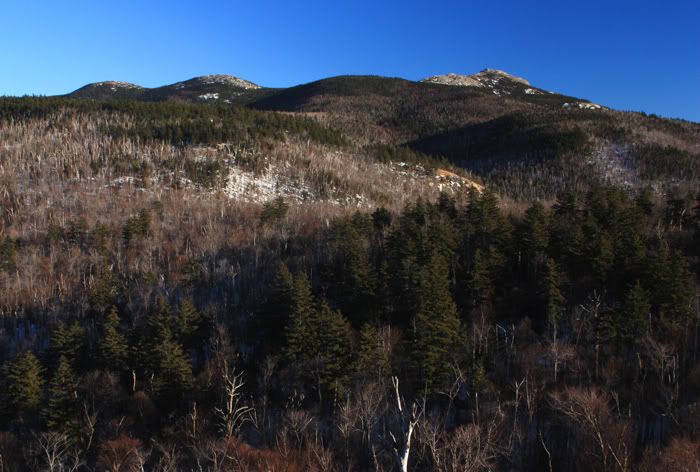
From there I could also see some ledges that I thought might be the ones I always see from the nice old slide on the Middle Sister Cut-Off, so I decided to see if I could get there since the going is so easy right now. ( I'm not big on crashing through thick spruce that favors wooded peaks). I guess this is a sub-peak of Mt. Paugus?
On the way there I saw another new boundary marker. This marker is on spruce, but the ones in the pass are on beech and they have sharp, pointy edges and the could easily cut the paws of a bear climbing for beechnuts. Have they considered this?
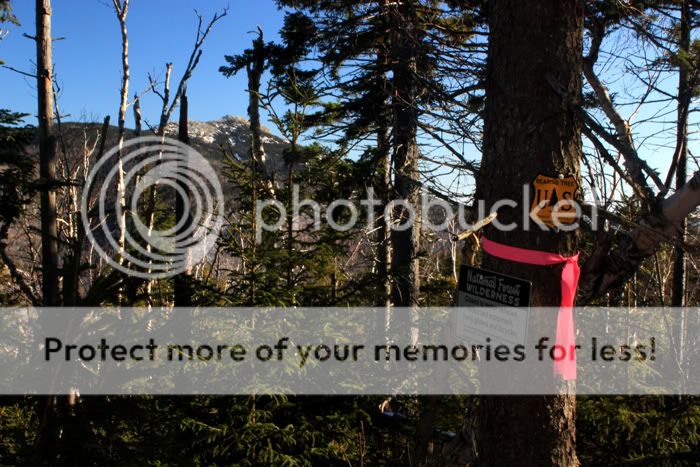
On the way I found an interesting track running through a big beech stand. It's about 5", too big for anything but bear and lynx, and it's definately not snowshoe hare. I've seen plenty of bear tracks and it just looks very different.
Here's the track pattern. The rear feet fall in the front track...
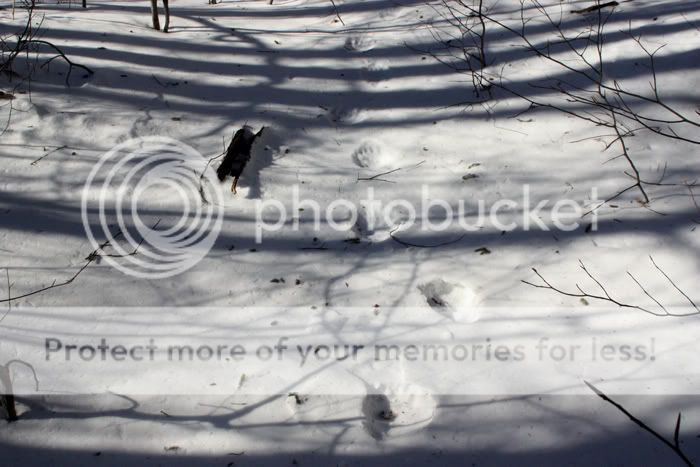
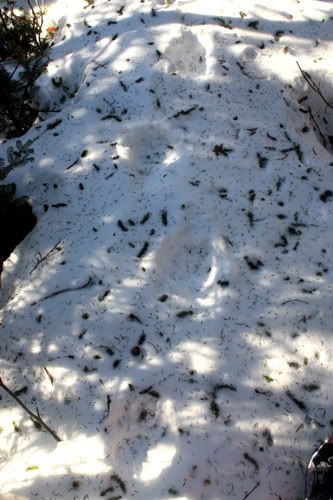
I couldn't see any claw holes, and I couldn't find any hair on branches.
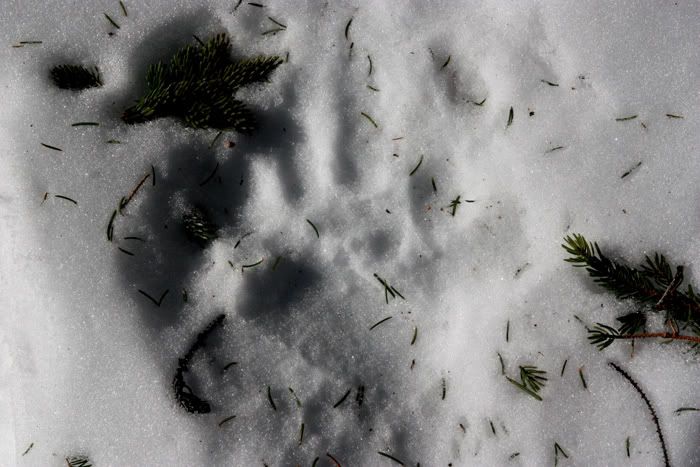
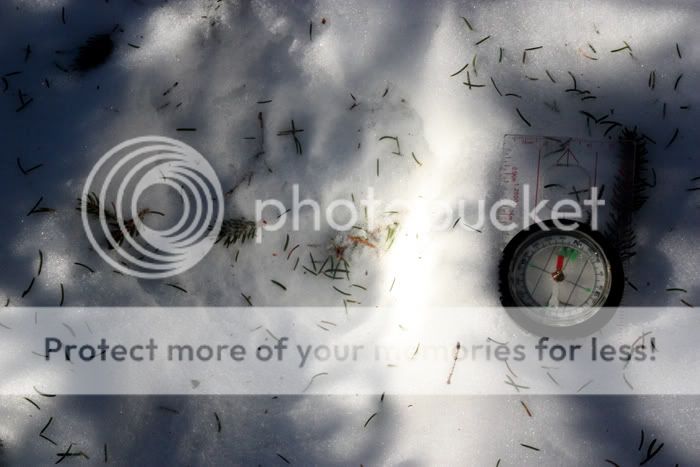
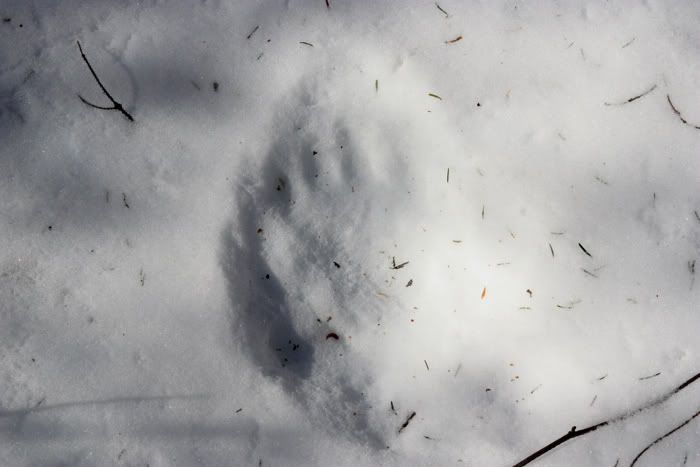
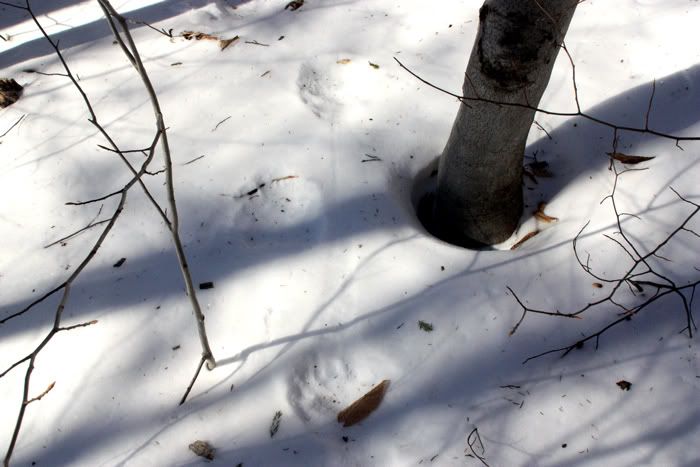
Very interesting. A few years ago I'm sure I saw lynx tracks in the saddle between The Sisters.
There are lots of bear nests, but you'll have that in large beech stands...
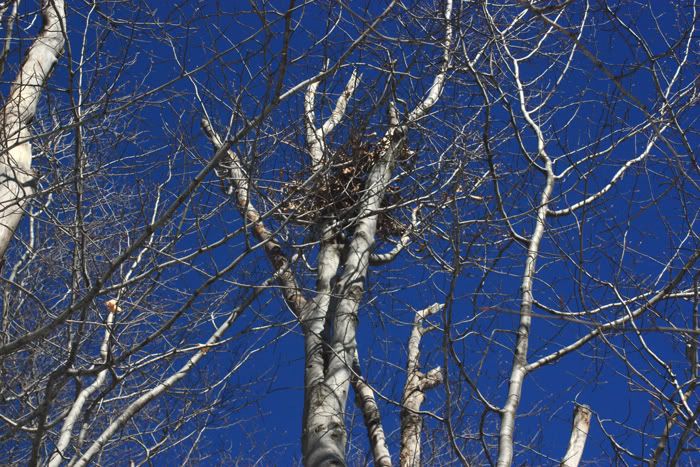
continued...
I took the Bolles Trail up to the height-of-land. There is a ledge on the western wall of the notch, only seen in winter, that I've wanted to explore. There's a new survey marker for the new wilderness boundary in the notch. From there, I made my way up to the ledge. There's a smaller, flat ledge that juts out, about the size of a kitchen table with a beautiful view of Mt. Chocorua and The Sisters.
The trail is directly below this ledge.

view to Mt. Chocorua and The Sisters...

From there I could also see some ledges that I thought might be the ones I always see from the nice old slide on the Middle Sister Cut-Off, so I decided to see if I could get there since the going is so easy right now. ( I'm not big on crashing through thick spruce that favors wooded peaks). I guess this is a sub-peak of Mt. Paugus?
On the way there I saw another new boundary marker. This marker is on spruce, but the ones in the pass are on beech and they have sharp, pointy edges and the could easily cut the paws of a bear climbing for beechnuts. Have they considered this?

On the way I found an interesting track running through a big beech stand. It's about 5", too big for anything but bear and lynx, and it's definately not snowshoe hare. I've seen plenty of bear tracks and it just looks very different.
Here's the track pattern. The rear feet fall in the front track...


I couldn't see any claw holes, and I couldn't find any hair on branches.




Very interesting. A few years ago I'm sure I saw lynx tracks in the saddle between The Sisters.
There are lots of bear nests, but you'll have that in large beech stands...

continued...
Last edited:

